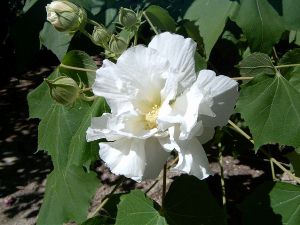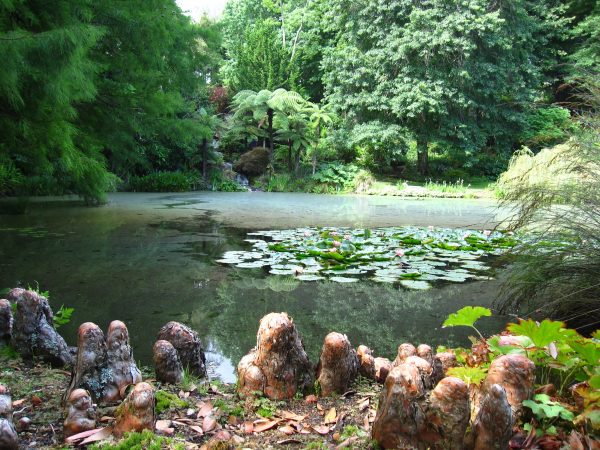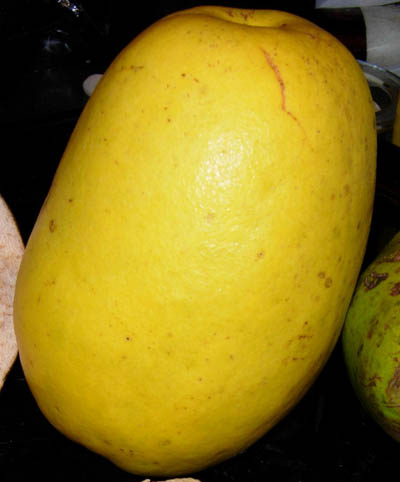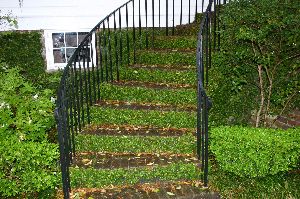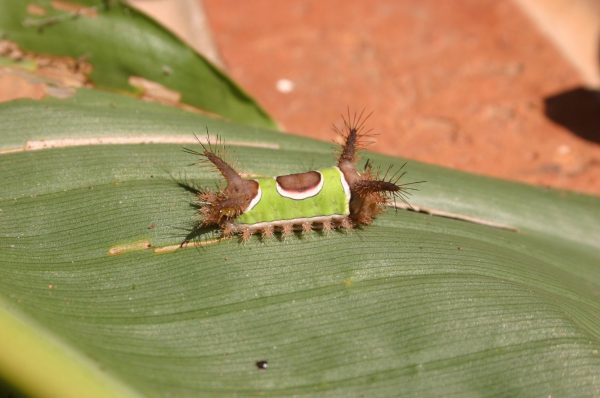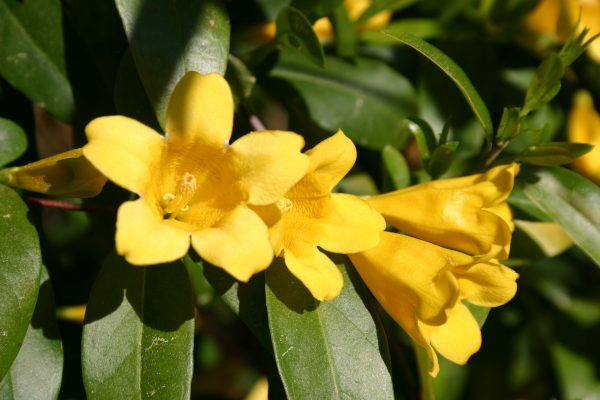Planting zones- Explanation
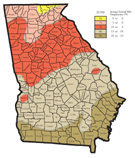
I was following a slow-moving compact car on a suburban street last week when it suddenly pulled to the right and decelerated to a crawl. On-coming traffic kept me from passing. As I waited, the driver of the car grabbed a piece of white paper from his passenger seat and studied it intensely. He tossed it down in frustration and unfolded a larger map from his glove compartment. After a moment of study, he threw this map to the floor as well. When the line of traffic to our left finally passed, the perplexed driver did a quick U-turn and headed back from whence he came. Being lost is one of the most frustrating occasions in the world. Even with maps, it’s hard to figure out how to proceed.
Gardening, too, is sometimes based on maps. A gardener in Cobb County e-mailed me recently with a simple but plaintive question, “What planting zone am I in? I live in Kennesaw and I need to know what plants will grow here.”
Sue is smart to realize that simply because a plant is sold at her local nursery, that fact doesn’t mean it will prosper in her garden. Garden centers sell to a wide range of gardeners. Some will be able to supply an environment a marginal plant can accept. That same plant in my garden might be compost by September. Plants have markedly different tolerances for winter cold and for summer heat. A tropical hibiscus that is glorious by your patio this summer will be lifeless if temperatures drop below thirty degrees in November. Lupine that perennially graces meadows throughout Colorado simply melts away in Georgia’s July heat.
The United States Department of Agriculture in 1960 mapped and divided the country into ten zones based on a ten degree difference in the average annual minimum temperature between each zone. Zone 1 includes parts of Alaska where their two seasons are divided into “winter” and “the Fourth of July”. Zone 10 encompasses areas in Florida where long pants are considered cold weather dress. Georgia was said to include Zones 7 and 8.
The hardiness map was revised in 1990, dividing each zone into two sub-zones, contrasting with each other by only a five degree difference in winter low temperatures. As you can see by the accompanying map, Sue lives in Zone 7a, where low temperatures range between 0 and 5 degrees Fahrenheit. Most of the metro Atlanta area is in Zone 7b, where low winter temperatures are between 5 and 10 degrees. Most plant labels include the zones in which the plant will grow. If the information label on plant you are considering says it is hardy in Zone 7, it will usually survive our winter just fine.
Another gardener, though, has a different plant hardiness question: “I live in southern Gwinnett County. On a sunny, sloped bank I would like to plant kinnickinnick (Arctostaphylos uvaursi), a evergreen that has pink flowers in spring and bird-attracting red berries in fall. It is listed as hardy in Zone 7. Would you recommend this plant for these conditions?”
I was not encouraging in my answer to him. The summer weather for Zone 7 in Georgia is not at all like Zone 7 in eastern California or Washington State. Horticultural opinion is somewhat divided but kinnickinnick seems to do better where summers are cool. It is very winter hardy but summer heat could be its undoing. In addition, the occasional warm days we receive in January might bring the plant out of dormancy and make it cold-tender. It is listed as hardy in Zones 2 – 7 but the northern U.S. seems like a better home for it.
Realizing the effect that heat and humidity have on plant hardiness, the American Horticultural Society divided the United States into twelve zones, divided by the average number of days each year that a given region experiences temperatures over 86 degrees. The zones range from Zone 1 (less than one day above 86 degrees) to Zone 12 (more than 210 days). Fortunately, most of the Atlanta area is in Heat Zone 7, which is identical to our Cold Zone.
What if you have your heart set on growing a plant that is supposedly not hardy in our growing zone? That’s where the FUN comes in! Gardeners are famous for attempting to create “micro-climates” that approximate the temperatures that a plant can endure. Banana fanciers dig their plants every fall in hopes of harvesting fruit the following summer. Golfers install fans and mist systems to cool their backyard bentgrass putting greens. My friend Tim Melton searches for a species of oleander that will survive an Atlanta winter. After all, planting zones are just a guide, not a hard and fast rule. One of the great pleasures of gardening is “growing outside the box” and pushing the envelope of plant culture in your area.
MORE INFORMATION



